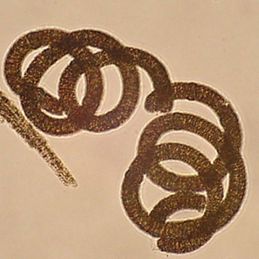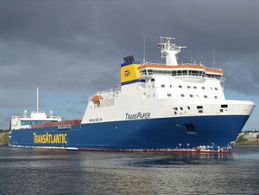The main bloom occurred during the opening three weeks of July, when the weather was clear and sunny. First signs of the bloom appeared on June 30th. One week later, surface blooms were seen in a large part of the Baltic Proper. However, as quickly as it arrived, the bloom disappeared after just three weeks.
The bloom kept well off Swedish beaches, except in the far south in the Hanö Bight.
As usual, blooms appeared in the Bothnian Sea during the second half of August, but the surface accumulations were less prominent.
First in the south, then in the north
- From a Swedish perspective, this summer’s bloom was relatively mild. The largest and densest bloom could be observed from satellite images under an almost unchanging cloud-free sky, from the 2nd to the 22nd of July, says Jörgen Öberg, oceanographer at SMHI.
The main part of the bloom was in the southeastern Baltic Proper, extending north into the Gulf of Finland and east to the Hanö Bight. The Swedish sea areas north of the Hanö Bight, including Gotland, were hardly affected this summer.
Following the three fair weeks, the Baltic Sea was covered by clouds for a week obscuring the satellite’s view. As the clouds dispersed, only fragments of the earlier bloom could be seen. These were visible until the 2nd of August.
The Bothnian Sea usually blooms later than the Baltic Proper, and this year was no exception. The eastern Bothnian Sea bloomed from the 11th to the 23rd of August. Remains of the bloom could be seen into September.
Dominant species

The scientists aboard the SMHI expedition from the 28th June to the 3rd July on the R/V Argos mainly observed Aphanizomenon spp. but no coherent surface aggregations were seen.
On the next expedition between the 19th and 24th July, dense surface accumulations covered large parts of the southern Baltic Proper, including in the Hanö Bight and the southern coast of Skåne. The toxic species Nodularia spumigena dominated.
Improving the SMHI algae monitoring
Two improvements to SMHI’s algal monitoring were introduced in summer 2010. The first was an improvement to the satellite image analysis, while the other involved more frequent observations from ships.
This year, a method has been developed allowing the combination of data from the two satellites ENVISAT and EOS-Aqua. The resulting images have a much higher resolution than those obtained from the older AVHRR sensor that was used previously. This extra detail is particularly useful close to the coastline.

Better in-situ observations are available from a ferrybox system which has been installed on the merchant vessel TransPaper. This system started measuring in May, as the ship travels weekly between Gothenburg (Sweden) and Oulu (Finland). Data are collected continuously from sensors on board and sent via satellite to SMHI. Sensors include those for chlorophyll-a (to measure phytoplankton biomass) and for phycocyanin (which is a pigment specific to cyanobacteria). Water samples are also collected automatically on board, and preserved to allow plankton to be analysed at SMHI’s Oceanographic Laboratory back in Gothenburg.
Real-time monitoring commences in the Baltic Sea and the Kattegat